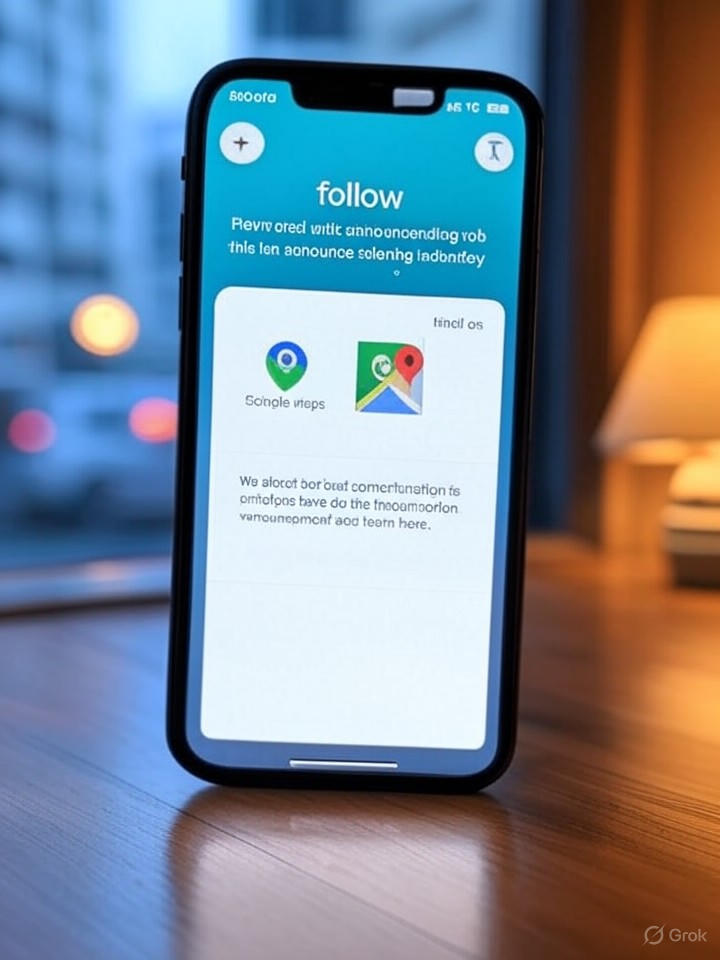In a move that underscores Google’s ongoing efforts to refine its digital ecosystem, the tech giant has decided to phase out a subtle yet valued social component of its flagship navigation app. According to reporting from Talk Android, Google Maps will discontinue its “follow” feature starting in September 2025, effectively removing a tool that allowed users to track updates from local guides, businesses, and other contributors. This decision, announced without much fanfare, highlights Google’s strategic pivot toward streamlining user experiences amid evolving privacy concerns and competitive pressures in the mapping sector.
The “follow” feature, introduced several years ago, enabled Maps users to subscribe to updates from specific places or individuals, such as receiving notifications about new reviews, photos, or events from followed locations. It fostered a sense of community, particularly among avid travelers and local explorers who relied on curated insights from trusted sources. Industry observers note that while not as prominent as core navigation tools, it added a social layer that differentiated Maps from rivals like Apple Maps or Waze.
A Shift Toward Algorithmic Curation
Insights from WebProNews suggest this discontinuation is part of a broader effort to enhance privacy and focus on AI-driven features, such as immersive views and personalized recommendations. By resetting follower counts and encouraging data exports, Google aims to minimize data retention risks, aligning with global regulatory scrutiny on user tracking. For developers and app integrators, this change could simplify API interactions, reducing the overhead of maintaining social graphs within the platform.
However, the move has sparked concerns among power users and local guides who viewed the feature as essential for building networks. As Android Authority detailed in an APK teardown last year, early signs of deprecation pointed to low overall usage as a key factor, yet niche communities—think food bloggers or travel influencers—may feel the loss acutely, potentially driving them to alternatives like social media apps for similar functionality.
Implications for Google’s Ecosystem Strategy
This isn’t an isolated tweak; it fits into a pattern of Google pruning underutilized features to prioritize high-engagement innovations. For instance, recent reports from Android Police highlight how the company has also phased out media controls and draft reviews, signaling a leaner app focused on efficiency. Industry insiders speculate that by shedding social elements, Google is doubling down on machine learning to curate content algorithmically, reducing reliance on user-generated follows that could introduce biases or spam.
The timing, just months after updates to Maps’ color schemes and styling as noted in Direction Forward, suggests a holistic refresh aimed at developers and enterprises. For businesses that used follows to engage customers—such as restaurants notifying loyal patrons of specials—the discontinuation could necessitate shifts to Google’s Business Profiles or external tools, potentially fragmenting user interactions.
Navigating User Backlash and Future Directions
User feedback, as captured in forums and tech publications, reveals a mix of resignation and frustration. While some applaud the privacy boost, others argue it erodes the app’s communal spirit, echoing sentiments from when Google ended similar features in other services. WebProNews reports potential alienation of community-driven users, who might migrate to platforms emphasizing social discovery.
Looking ahead, Google’s emphasis on AI tools like generative search and augmented reality overlays could fill the void, offering more seamless, predictive experiences without explicit following. Yet, for industry players, this serves as a reminder of the impermanence of app features in a fast-evolving tech environment, where data efficiency often trumps user nostalgia. As September approaches, affected users are advised to export their data promptly, ensuring a smooth transition in an app that continues to redefine how we navigate the world.




 WebProNews is an iEntry Publication
WebProNews is an iEntry Publication